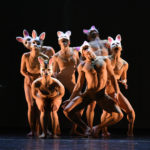New York’s delightful deluge of ballet and modern dance - Vancouver Ballet Society
- Home
- City Reports 2020 - 2023
- New York’s delightful deluge of ballet and modern dance

By Robert Greskovic
New York City Ballet’s slightly COVID-delayed spring season in late April began with a large-scale revival: The Goldberg Variations, Jerome Robbins’ 1971 90-minute showcase of classical dancing. The ambitious undertaking, involving dancers from all ranks of the company, shone impressively, as Robbins’ scheme goes from classroom-styled moves to a grand courtly display. In featured roles, Unity Phelan with Taylor Stanley, Sara Mearns with Tyler Angle, and Tiler Peck with Joseph Gordon stood out, as, in less prominent roles, did Ashley Laracey and Jovani Furlan.
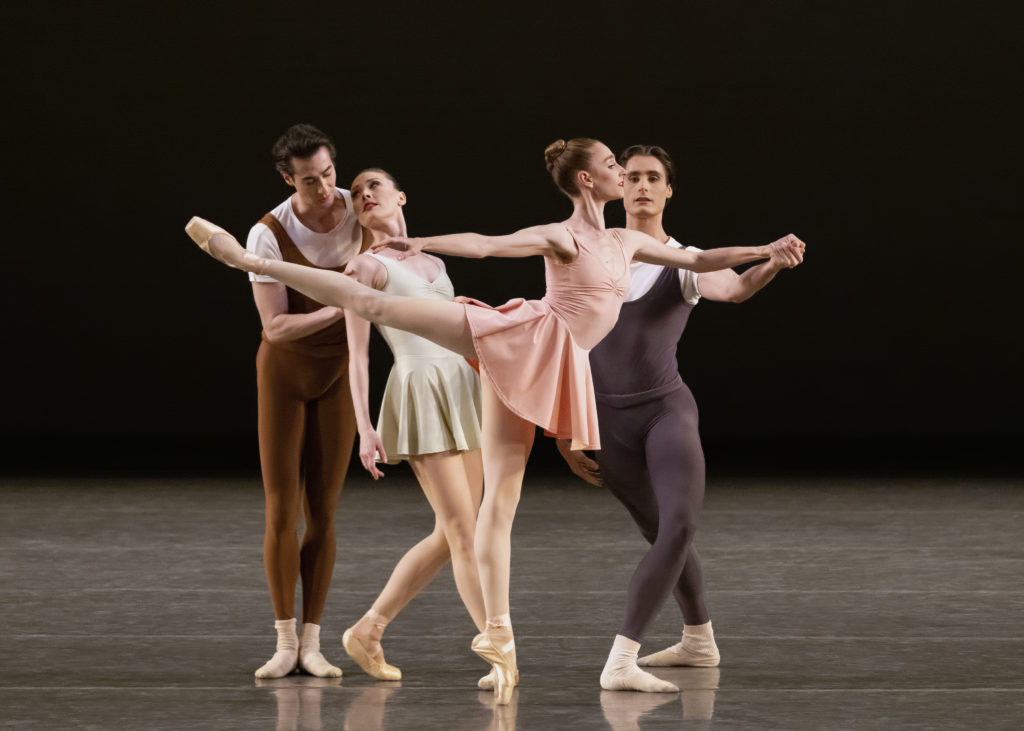
With her world premiere, Law of Mosaics, Pam Tanowitz gave NYCB’s repertoire a memorable addition. Set to an artfully patchy score by Ted Hearne, and aglow in Reid Bartelme and Harriet Jung’s tart pastel-hued unitards, Law of Mosaics found its cast of nine visibly challenged and engaged as the modern-dance-based Tanowitz’s fascination with ballet led to rewarding freshness for both dancers and audience.
The season’s annual mini-Stravinsky festival, marking the 50th anniversary of NYCB’s now legendary opening festival, which began under George Balanchine’s watchful eye, brought back a number of highlights from that landmark occasion. Balanchine’s bold and energy-filled Symphony in Three Movements was among the more notable offerings.
For a 50th-anniversary run at the Joyce Theater — the celebration was delayed for two years due to the pandemic — Trisha Brown Dance Company offered a luminous double bill of Brown’s dances from the early 1990s. Both works feature notable designs that Robert Rauschenberg provided in collaboration with Brown. Foray Forêt and Astral Converted both showcase the company’s dancers working confidently through moves devised by Brown to look both off-hand and carefully calibrated. Rauschenberg’s golden, oil-slick-hued beachcomber outfits for Foray Forêt help the dancers’ moves grace the stage with iridescence, accompanied by music from a marching band heard through the walls of the theatre. Astral Converted complements Foray Forêt as an excursion for men and women in silver all-over tights on a stage set by Rauschenberg, whose tubular light towers interact with the dancers’ moves.
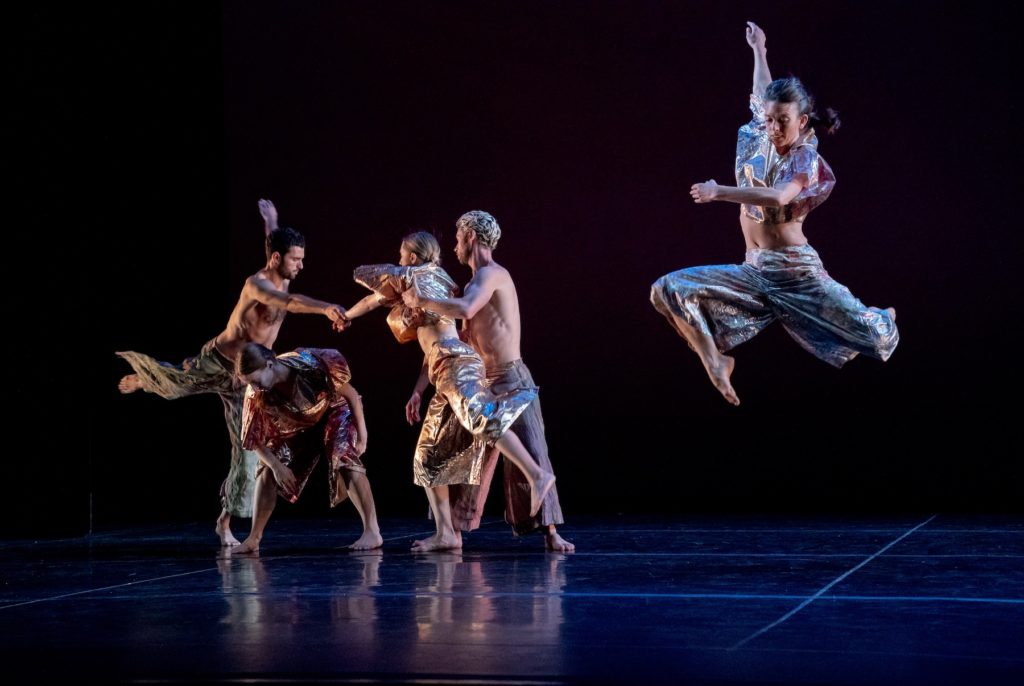
For its weeklong season in the city’s intimate Joyce Theater, Paul Taylor Dance Company featured a selection of Taylor’s dances programmed to stress the modern-dance choreographer’s more experimental side. Visual designs from Rouben Ter-Arutunian and especially Rauschenberg strikingly framed the seldom seen works. White and Sulphur, a compellingly concentrated solo from Images and Reflections (1958, to Morton Feldman), originally danced by Taylor, had John Harnage take on its physical display while sporting Rauschenberg’s sleek, softly spiky costume.
The week also included Hope is the Thing with Feathers, titled after an Emily Dickinson poem and a memorable premiere by Michelle Manzanales, a dance educator and choreographer who came to the attention of Taylor not long before his death in 2018. With golden casual-dress costuming by Santo Loquasto, and set to an affecting playlist of bird-themed recorded music, Manzanales’ fluid and inventive choreography fit her cast of 11 rewardingly, interweaving moves reminiscent of Taylor-made dances with those from her sure and personal hand. With luck, she will be given further commissions.
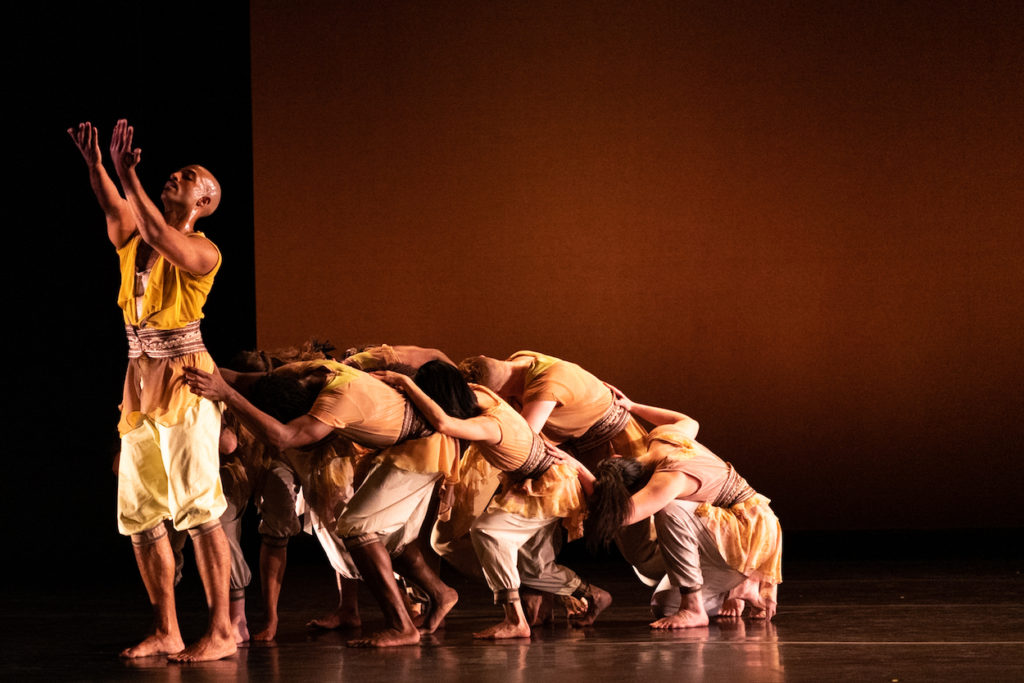
For its first season in the Metropolitan Opera House in three years, American Ballet Theatre appeared from June into July for five weeks, down from its usual eight weeks. The run was billed as “Kevin McKenzie’s Farewell Met Season”; by the year’s end, Susan Jaffe will take over the reins from McKenzie, who has had 30 years at the company’s helm.
Multi-act ballets dominated, including Alexei Ratmansky’s Of Love and Rage [reviewed here following its 2020 premiere by ABT in California]. The two-act ballet is based on Callirhoe, an ancient Greek text, and set to arrangements of Aram Khachaturian’s music. Despite a complex plot not readily followed in Ratmansky’s staging, it remains a good and often lively show, with frequent high points from its male dancers, often as forceful ensembles.
Ratmansky’s first cast of leads stood tallest, from the luminous performing of Catherine Hurlin as Callirhoe and, somewhat less so, of Aran Bell as her jealous and then repentant lover, Chaereas. Later, Hurlin made an unforgettable debut as Odette and Odile in Kevin McKenzie’s 2000 staging of Swan Lake.
To mark its 75th anniversary as a staple at ABT, Balanchine’s Theme and Variations, to Tchaikovsky, headed a triple bill. The one performance I was able to catch had Devon Teuscher in the ballet’s ballerina lead, where she shone with unerring aplomb and authority.
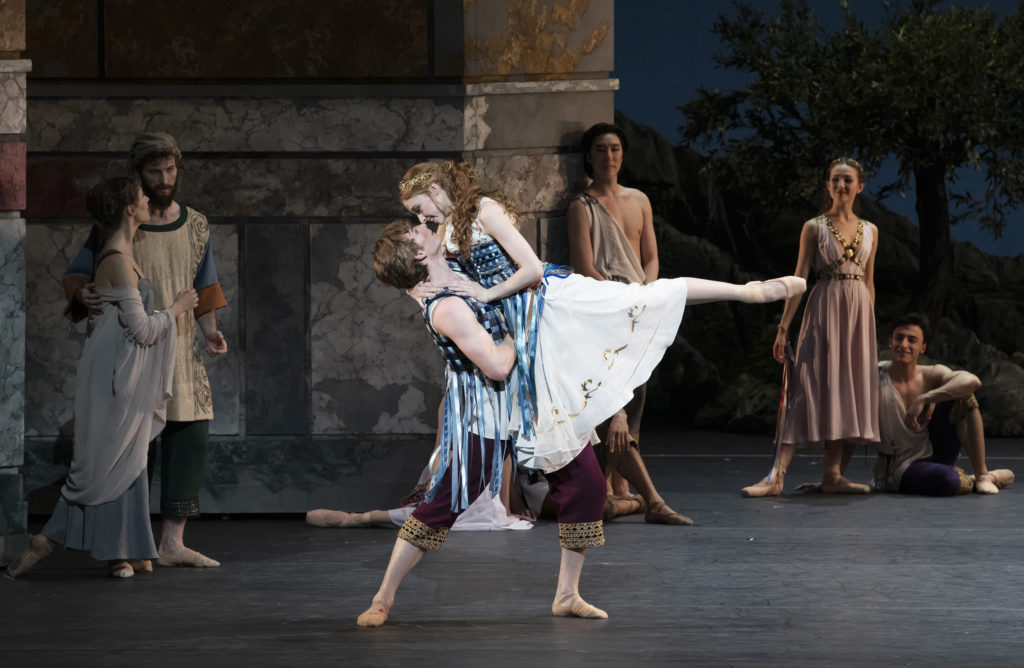
For a three-week July run at the Joyce, Momix presented Alice, a 22-episode presentation of eye-filling visuals and variously acrobatic and sometimes surreal dance segments all conceived and directed by Moses Pendleton, the group’s founder and director. Based, of course, on Lewis Carroll’s famous books, commonly known as Alice in Wonderland, the 85-minute stream of scenes takes incidents and images famous from Caroll’s texts and recasts them as opportunities for the eight Momix performers — whom Pendleton categorizes as dancer-illusionists — to illuminate and illustrate his take on Alice and her adventures.
Pendleton’s section names are pun-filled: A Trip of Rabbits shows rabbit-masked, nude-looking men and women in groups, gambolling to giddy effect. Go Ask Alice finds Alice towering “ten feet tall” to embody a line from White Rabbit, its accompanying 1960s psychedelic song by Grace Slick and the Jefferson Airplane.
